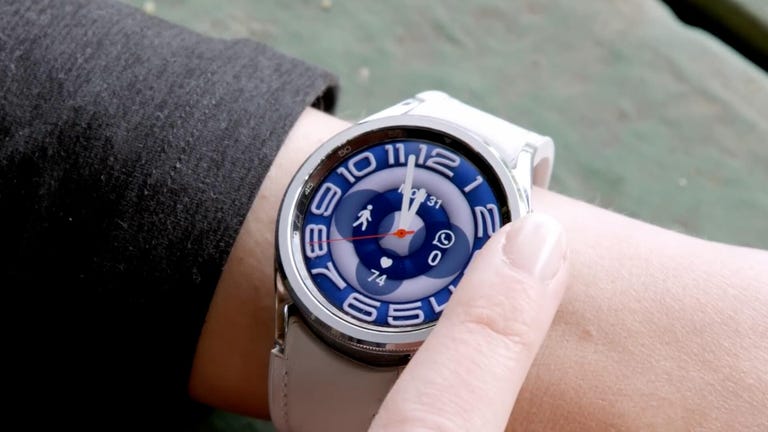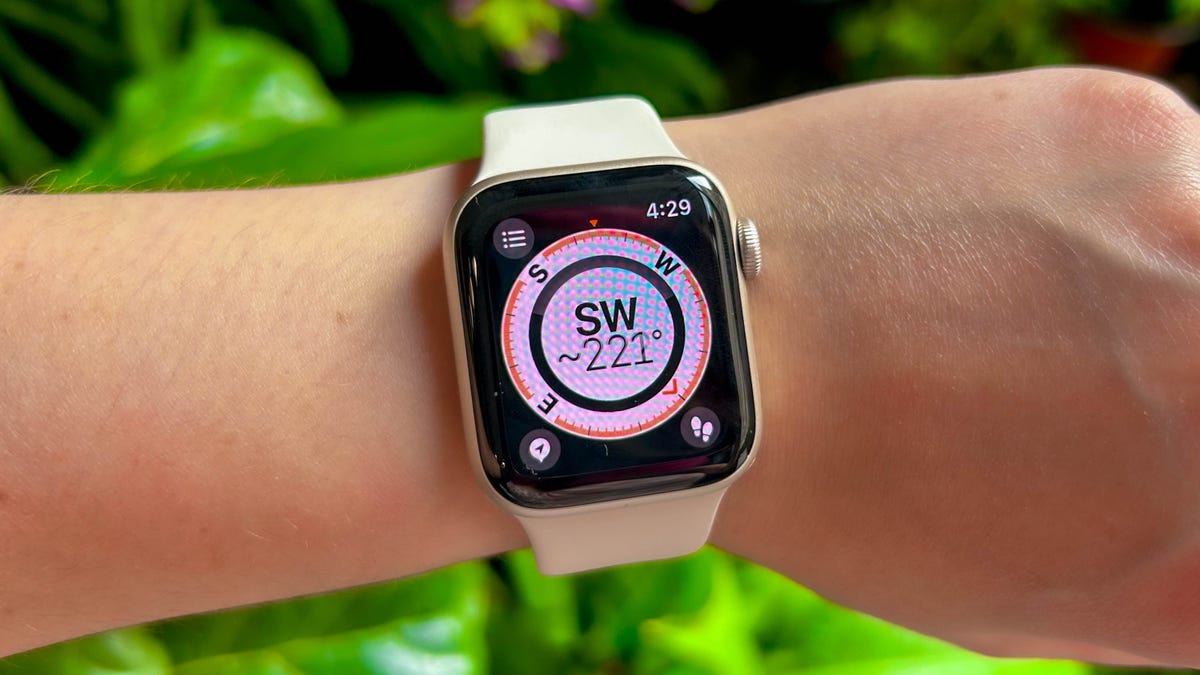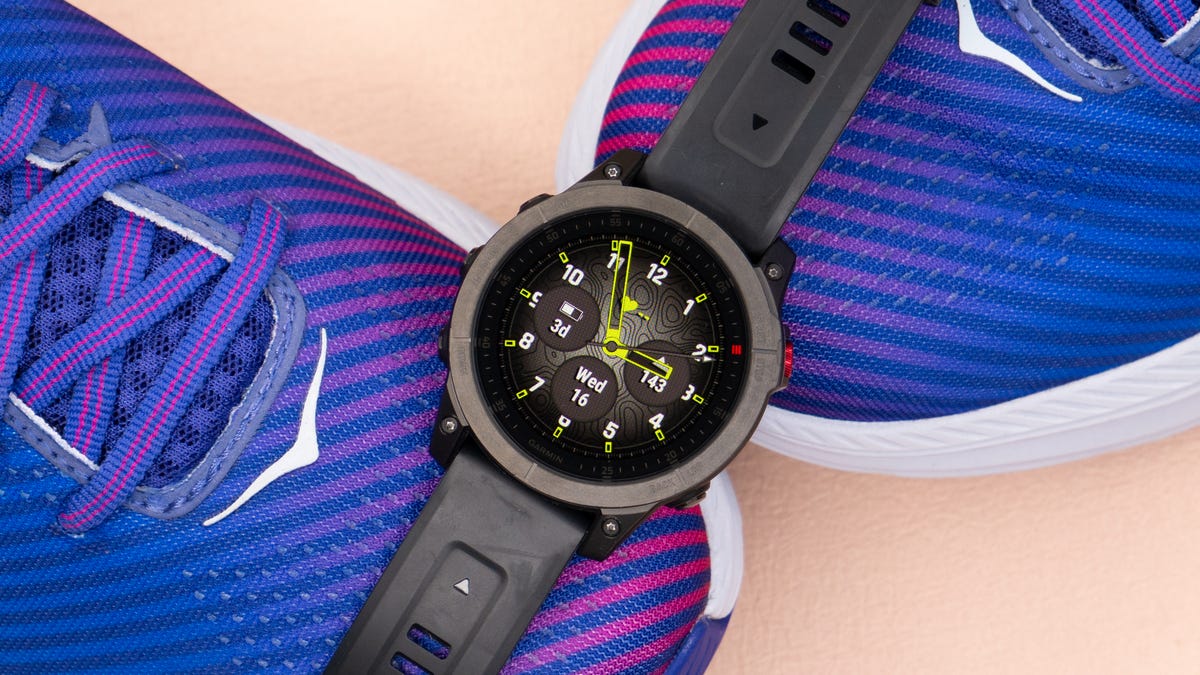Smartwatches don’t come cheap, so it’s important to pick the right one. The best way to do that: Carefully consider why you’re interested in a smartwatch in the first place. For example, are you looking for a watch that can monitor your sleep or help you train for your next race? Or do you only care about meeting your step goal and seeing notifications on your wrist? Most people likely fall somewhere in between.
The good news is that you can narrow down your options with just three questions. Do you use an iPhone or an Android device? How much are you willing to spend? And how do you plan to use it?
You’ll also want to consider comfort, size and style. After all, a smartwatch isn’t useful if you don’t enjoy wearing it. Comfort is especially important if you’re looking for a smartwatch to use as a sleep tracker.

Google’s Pixel Watch.
Most mainstream smartwatches fall around the $300 to $400 range, although you may pay a higher price for extras like LTE connectivity or a fancier finish. These watches provide health monitoring tools, fitness tracking and the ability to replicate some of your phone’s functionality. These are the right choice if you want a well-rounded experience, especially when it comes to health and wellness. The Apple Watch Series 9, Fitbit Sense 2, Google Pixel Watch 2 and Samsung Galaxy Watch 6 fall into this category.
Below are some examples of features you’ll find on smartwatches in this price range.
- Plenty of exercise mode options
- Sleep tracking (sleep duration, sleep stages, etc.)
- Integrated GPS for tracking outdoor runs
- The ability to view (and in many cases respond to) texts from your phone
- The ability to take phone calls from your wrist
- Optional LTE
- Voice assistants (Siri, Alexa, Google Assistant)
- Blood oxygen saturation monitoring
- Heart rate monitoring
- ECG app
- Temperature readings
- Always-on display (keeps the screen on even when the watch is idle)
- Timers, alarms and reminders
- Notifications from apps on your phone
- Third-party apps
- Onboard storage for music
- Mobile payments

The second-gen Apple Watch SE.
You can also find smartwatches that cost around $250, give or take. These watches include many of the features mentioned above, but not all of them. If you mostly want to see notifications on your wrist, make mobile payments, track workouts and don’t care much about deeper health insights, this type of watch is the right choice. Watches like the Apple Watch SE and Fitbit Versa 4 are examples of value-priced smartwatches.
While watches in this price range are usually the right choice for many people, it’s important to remember what you’re missing. The $249 second-gen Apple Watch SE, for example, lacks an always-on display, ECG, blood oxygen measurements and temperature sensor. But it has the same software, high- and low-heart-rate notifications, car crash detection, fall detection and selection of exercise modes as the Series 9.
The $230 Fitbit Versa 4 has many of Fitbit’s most notable fitness features — like active zone minutes, sleep tracking, built-in GPS and the daily readiness score (which requires a Premium subscription). You can also get phone notifications and access Amazon’s Alexa on your wrist, and can access Google Maps and the Google Wallet. But you’ll need the pricier $299 Fitbit Sense 2 to get Fitbit’s more sophisticated health capabilities, like sensors that scan for potential signs of stress, ECG and a skin temperature sensor.
Garmin’s $250 Venu Sq 2 offers a long battery life (an estimated 11 days) and many health and fitness features for the price (GPS, blood oxygen measurements and sleep tracking). But it doesn’t have a speaker or microphone for taking calls, onboard music storage (unless you buy the $299 Music Edition) or access to Google Play Store apps.
It’s hard to find new smartwatches that cost less than $200, although there are some options out there. If you want to pay less and don’t necessarily care about using apps, you might want to consider a fitness tracker instead. (Fitbit also works with certain insurance companies to provide devices for members, so it’s worth checking if your provider offers this benefit).
Hybrid watches

The Garmin Epix Gen 2.
There’s another major smartwatch category to consider: premium fitness-focused watches. These devices usually have everything you’d find in regular flagship smartwatches, but with more rugged designs and additional characteristics aimed at sports enthusiasts. If you’re training for a marathon or work in remote environments that may require a more precise GPS signal, one of these watches may be for you.
You can expect to pay between $500 and $1,000 for these types of watches. Garmin’s Epix Gen 2 and Fenix 7 Standard start at $800 and $650 respectively, and the Apple Watch Ultra 2 is available for $799.
You may wonder what makes these watches better for fitness buffs than their cheaper counterparts. While the specifics will vary, expensive fitness watches tend to have better durability, longer battery life, more accurate location positioning, customizable buttons and extra features that target specific sports, like running, scuba diving or golf.
The Apple Watch Ultra 2, for example, has a 36-hour battery life compared to the Series 9’s 18-hour battery life, water resistance of 100 meters compared to the Series 8’s 50 meters, a depth gauge with a water temperature sensor, dual-frequency GPS, a titanium build, a larger screen and a programmable Action button.
Compared to the Forerunner 255, Garmin’s Fenix and Epix watches also have increased water durability (100 meters versus 50 meters), lengthier battery life, dual grid mode for showing location coordinates in different formats, customizable hotkeys and an array of golf-oriented features. (The Forerunner 255 still has plenty of running-focused tools, like a race predictor to help with marathon training, since it’s largely aimed at runners.)
When is the best time to buy a smartwatch?

The Fitbit Charge 5
If you want to spend less than $200 and don’t care about features like LTE connectivity, virtual assistants or third-party apps, a fitness tracker could be the right choice.
Fitness trackers typically provide health metrics like sleep and activity tracking, heart rate, multiple exercise modes and blood oxygen saturation in a smaller (and less expensive) package, but skimp on some smart features like those mentioned above. Since fitness trackers usually have smaller screens, you also won’t be able to see as much information at a glance as you would on a smartwatch.
But fitness bands do offer basic smartphone companion features, such as the ability to show call and text notifications and set timers and alarms. Another benefit is that you’ll likely get longer battery life from a fitness band than a traditional smartwatch. Check out some of our favorite fitness trackers.
Best smartwatches in 2023
Still not sure where to start when buying a smartwatch? Check out CNET’s guide to the best smartwatches for our top picks, which range from below $300 all the way up to $1,000. This year’s top picks so far include the Apple Watch Ultra 2, Apple Watch Series 9, Google Pixel Watch 2, Samsung Galaxy Watch 6 and Garmin Epix 2 among others.
We test smartwatches by tracking workouts with them, wearing them overnight while sleeping, testing how well they automatically detect exercises, relying on them for notifications when away from our phones and running the battery down to see how long they last. We also take readings from the various health sensors and ascertain what they add to the overall experience. Our goal when testing smartwatches is to assess their overall value by evaluating which features they offer, how well these watches execute those functions and how the whole package compares to the competition.

